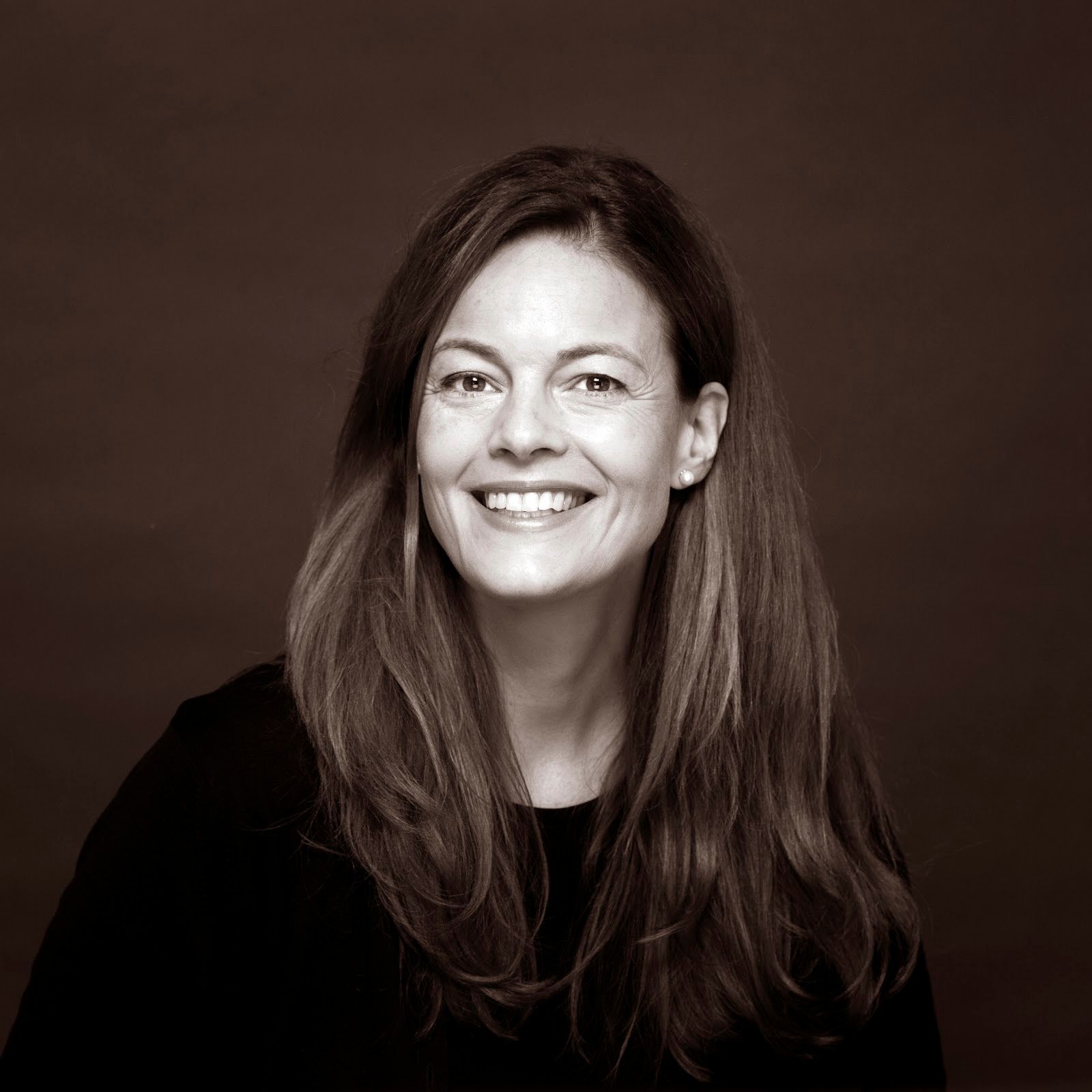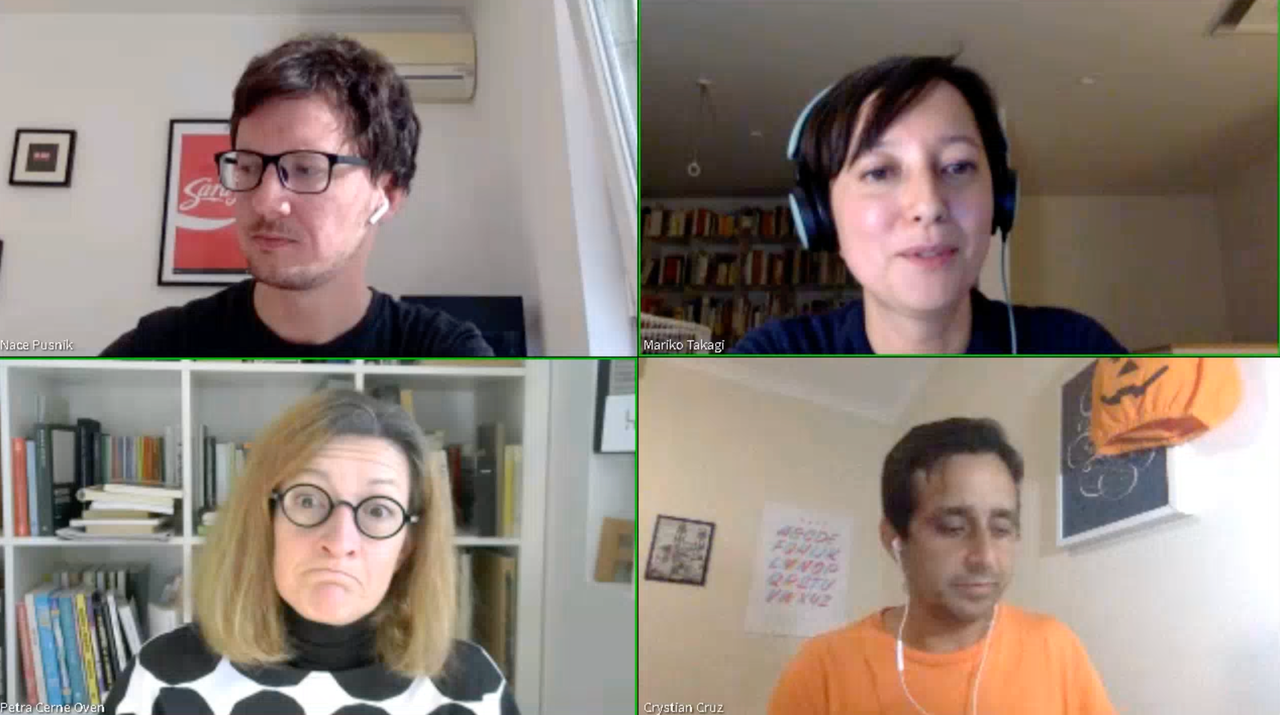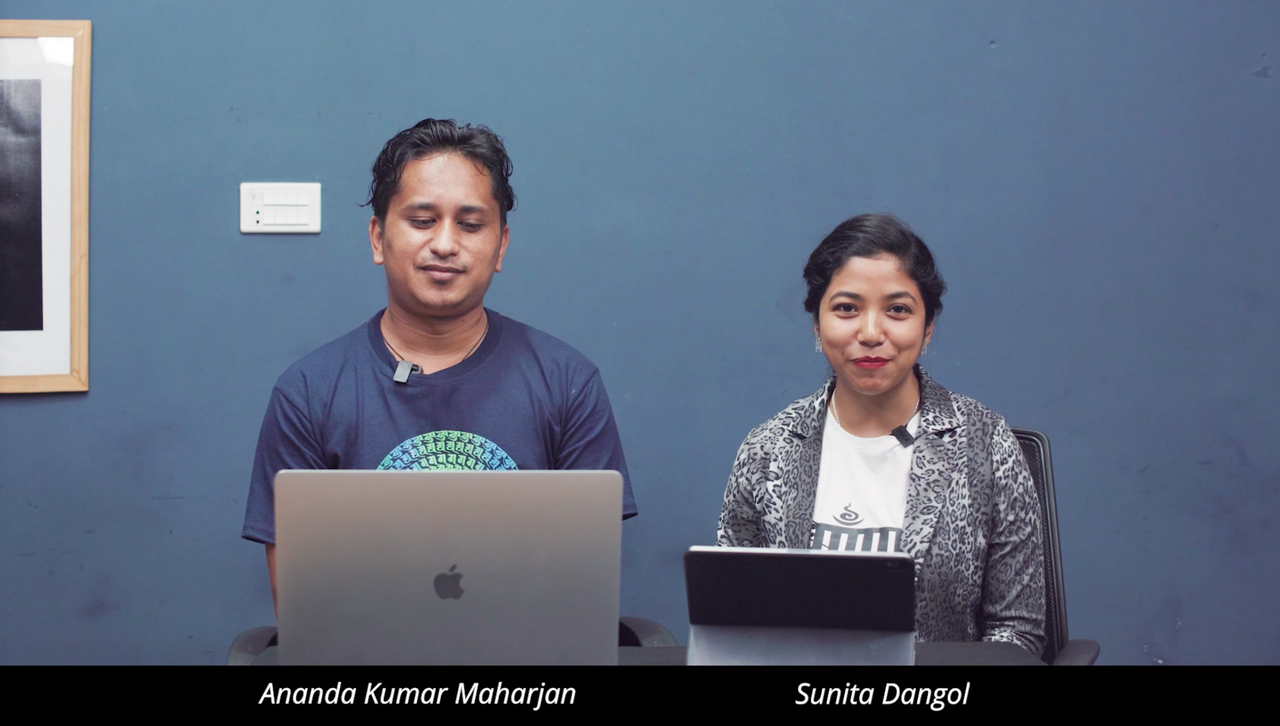Carolina Laudon is a typographer and type designer living in Gothenburg, Sweden. She runs a one-woman type design studio dedicated not only to type design, lettering, and font development, but also to spreading knowledge about typography’s history, technology, and expressions. Laudon received Sweden’s most prestigious typographic design award, The Berling, in 2012, and the Sten A Olsson Foundation for Research and Culture Award in 2014. After serving on the board for the past two years, in 2020 Laudon became the first woman president of the Association Typographique Internationale (ATypI).
We caught up after last year’s ATypI conference to discuss her role in, and vision for, ATypI. — KS.

KSENYA SAMARSKAYA. Congratulations on running your first ATypI conference! During a pandemic, online — and, as the first woman president of ATypI — perhaps backward and in heels. How did it go? How are you feeling about it now?
CAROLINA LAUDON. I’m so impressed that we managed to find a platform that was so flexible: we had a hangout room, we had different speaker tracks that attendees could listen to. I thought the platform itself was very, very interesting. It was new so we had some technical struggles. Still, I found that overall it was very impressive.
KS. People seemed to really respond to the hangout room.
CL. Yeah, I think so too. Online conferences are so different, because when you attend an in-person conference, you meet people, you chat with people. But here, there were new boundaries that were broken.
There were two things that were very special with the hangouts. First, you actually entered people’s homes. It was so personal. People were sharing books, sharing stories from their life, their cats and dogs, their family. And second, anyone could attend. Everyone was invited, and there were scholarship tickets for anybody who couldn’t afford one.

KS. Are you looking forward to going back to in-person conferences? Or do you like the digital version enough that you’d want to keep something like it going?
CL. I would actually like to have the opportunity to keep this kind of conference, one that’s capable of including people who are not able to travel. Because of course, when you are at a conference, the people who attend, it’s because they can afford to go there: timewise, financially, somebody supported them. And for some people, attending an in-person conference is just not possible. ATypI has always strived to be very global, and I think having the conference online has made it that much easier for everybody. This year we managed to reach a wider audience, doubling our attendees compared to past years, which made us very happy.
At the same time, for ATypI and the community, the in-person conference remains the backbone. Let’s see how the future will unfold. [After this interview was conducted, ATypI announced that in-person conferences will move from the fall to the spring of each year, starting with ATypI Paris in 2022. Online events will continue throughout 2021, including monthly hangouts, a type technology forum, and another ATypI All Over conference. — Ed.]

KS. What are the other conversations ATypI is having right now, in terms of what’s next, or how it sees itself going forward?
CL. We have started a serious dialogue about an international session project, of which the Pan Afrikan dialogues (a set of lectures that was part of this year’s ATypI) was the first step.
I try not to focus too much on all the political debates going on right now around the world. Hopefully we can focus on moving forward to a more sustainable future for all. The strength of ATypI is as a global, and diverse, organization. We’re always trying to include more design cultures and designers. This is why we visit other countries. Inclusion is more about meeting each other and connecting than just changing or accepting another’s terms. Representation is something you have to work hard to reach, it takes effort and changes at a deeper level.


KS. What are the tactical ways ATypI is working on getting that geographic and ethnic diversity? On making it more appealing for those demographics to be part of the association?
CL. Our main focus has been to travel around the globe, visiting a new city, or country, every year. And we have worked for many years with country delegates. In our internationalization project, we are trying to directly connect and collaborate with members living in countries that are not always able to join due to distance. This year we expanded our board with three additional members from Asia, where our community is strong. So, we’re encouraging people to join in different ways, and also encouraging people to speak.
And what the country delegates do is share knowledge. This year we opted for something that I think turned out very nice: some countries did a video recording where people shared what’s going on in their community within typography, how it looks. This is something I was really excited about. There weren’t very many countries that did this, because it’s a lot of work to put together, but I’m hoping this will be something that when people see it—they’ll be inspired by it. That they will come back next year, and have a presentation of their own.
And the Pan-Afrikan dialogues were very, very important. We couldn’t have done that without Professor Saki [Mafundikwa], who’s from the Pan Afrikan Design Institute. That connection was critical, and their presentations were very, very good. There was so much I didn’t know about the languages and alphabets that exist in Africa.

KS. You’ve mentioned ATypI’s conversations around sustainability — what does sustainability mean, or look like, for ATypI?
CL. It started with a discussion about conference goodie bags and their contents — we discussed the impact our conference had and decided to take action. As a global organization, we work to address the United Nations’ Sustainable Development Goals, and there are areas where we can make a difference.
Sustainability can be different things: it is not only environmental issues — it also means striving for equality between genders, ethnicities, geographic groups, ages, socioeconomically diverse groups, and more. We have to make it more sustainable for everyone. So we’re not driving in just one direction. We’re trying to include as much as we can. UN’s Agenda 2030 is not to be seen as an obstacle; it’s really a road map for innovation.
One of the things we’re working on now is the goals regarding inequality: to reach out wider, to include more people, to have better representation. This is not something that is a straight road; it’s something we have to work hard for. This year we got a new board, and excluding me, there are nine women and nine men on the board, which is excellent. Our board is fully gender-balanced. And it was the right time to have a woman president. We would like to also have gender balance among speakers, and we are working hard on that by encouraging more women to speak. We have a diverse group of reviewers to make sure we have diverse and balanced opinions for which presentations get selected.
And when we travel to another country, and bring the conference there, it’s important to collaborate as much as we can with people who similarly strive for sustainability. We have to try as hard as we can to make it more environmentally friendly. We are looking at, and talking to, other conferences in terms of how they are approaching this, to share ideas. And this is something that’s very close to my own heart, essentially, to find our environmental solution.



KS. Could you talk about the experience of serving on the Board of Directors? What makes it a rewarding process? Or what makes a good board member?
CL. The board has been very different under different presidencies. It changes a lot because it’s a quickly rotating board — we have elections every year. We have a lot of people. And we have an executive director, Tamye Riggs, whom I work very closely with.
There are a lot of things to do in putting together a conference. Before I became president, I was part of the core team, which gave me good insight into the operational part: like, what does it take to actually pull off a conference? There’s a lot of work reviewing all the proposals and trying to set the table. But there’s so much more than that: all the social media, the YouTube channel, the editing, before the editing, negotiations over everything from coffee to bags to … everything. So I had insight into that. But online conferences are very different. Online offers instant updates, which was a huge challenge. And because it was a global forum, updates happened around the clock. We did not fully see that coming.
Boards are all unique, and all communities feel different. I hope everyone feels like they are a part of a team here. The core of ATypI is to be a global design network and platform for collaborations. So, that is my goal. That we all enjoy being together, and working to create an event and a design network. I personally enjoy having clear job descriptions. If there isn’t one, I write one. You need to know who you are on the board, what your role is: this is my assignment, this is what I’m going to do. And I would prefer it rotated a bit. Because I think by doing different things, we get more appreciation for what other people do, and we can also help other people. I would like the board to be a place where we teach each other, give insight and support. Because people that join the board are amazing. And it is a nonprofit organization, so we have to help each other. When you join the board, you go in with your heart.


KS. One last question. There’s an assumption that ATypI is just for career type designers, but there are a lot of people who are interested in type coming from various fields or having different levels of engagement — who is ATypI for, and who would benefit from being a member?
CL. Anybody who wants to be a part of our design network, that would be my first assumption: if you want to be part of the network, or speak at our conference, please join ATypI.
I wish I could say something very concrete, like you would get this or you would get that. But I think it’s the people. ATypI becomes what you and I make it into. We are the network, us humans. ATypI has a huge amount of type design teachers, typography teachers, students. Many of our members are not designers but have a huge interest in different languages and the technical aspects of conveying them on-screen. Some people come to ATypI just to listen to the design talks; they don’t work with typography at all. Maybe they are just there to do something fun, or interesting. And that’s okay too, because you can get inspired by other professions.
Though there are generally two kinds of members. Members who want something for themselves: to watch a talk, or to have a broader network, they want something out of it. And there are the members who want to contribute, they want to create change, or start a dialogue.
I was a member for many years, and I just wanted to have a network because in Sweden we are what, five or six type designers? And I’m the only one on the west coast. I wanted to belong to a network, and it was important for me to grow as a designer, to understand the new technology that comes around.
And if you want to initiate change — I’m not good with people who just complain. Because I think that you shouldn’t complain, I think that you should make the change. You have to act. If you feel there is no gender balance, for instance, if you feel that there are too few women who speak at our conference, well, we’ve got to have women sign up to speak. They have to be part of that change. When the position of the president came up, I felt obliged to sign up. Because a lot of women would want a woman president, and I think that’s very important. So you have to stand up a little bit, create the change. If you want to have a dialogue with Afrikan designers, join up and ask for that, make it happen. ATypI is a body that is movable, and it does change depending on who wants to join us.
So that’s it, that’s what members get. They get a network, and they get to be part of being in that community.
Our conversation turned toward education, touching on Carolina’s extensive experience with teaching and lecturing, as well as being a lifelong student. That dialogue, and Carolina’s adept insight, can be found at Eye on Design.
